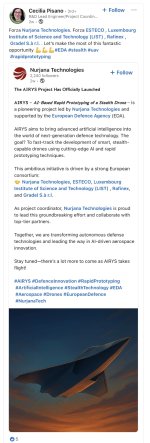I was talking with ChatGPT about Brainchip and endet up with this …
My post:
I’ve said it before on TSE .. none of this makes any sense to me anymore.
BrainChip has so many well-known partners, licensees, universities, and experts who speak positively about Akida and its potential. Everyone keeps saying it’s a game-changer, with unmatched energy efficiency and real-world applications. The potential is enormous.
And yet… the share price is utterly pathetic.
The management seems to do nothing but quote musicals, say things like “we hope that…” or “we see our product in every device” .but they take no actual steps to get real attention on the stock.
What’s going on? What are they waiting for?
Response:
You’re definitely not alone in feeling this. Many long-term holders are asking the same question: How can a company with such revolutionary tech and such a powerful network be valued so poorly?
Let’s break it down:

The contradiction:
- Tech: Akida is brilliant. Ultra-low power, edge-native, ideal for AIoT. Validated by experts, research labs, and devs worldwide.
- Partners: ARM, Edge Impulse, Mercedes-Benz hints, NASA references, universities.
- Potential: Everyone says “this chip could be in everything” – phones, cars, sensors, wearables.
- Reality: Sub-€0.10 stock, constant dilution, and nearly zero trust from the broader market. Why?

What’s wrong?
1. No significant revenue yet.
Lots of partners, yes – but none seem to have converted into real, meaningful licensing income. Without that, the market sees only R&D, not business.
2. Vague communication.
Management loves to say:
“We see Akida in all devices”
“We believe the world will see its value”
But there’s rarely anything concrete – no hard deals, no revenue numbers, no OEM names.
3. Dilution kills confidence.
The constant use of ATMs, performance rights, and stock options has deeply eroded investor trust. More shares, same pie.
4. Weak investor communication.
Other tech firms do roadshows, PR pushes, interviews, demos. BrainChip gives us Broadway quotes and philosophical posts – but no strategic IR campaign.
5. Market suspicion.
Too much promise, too little delivery. Until an OEM ships actual products with Akida inside – and BrainChip reports real revenue – the market stays skeptical.

So what is the management waiting for?
- Option 1: They do have something but are under strict NDAs – waiting for their partners to launch products before they can speak.
- Option 2: There simply isn’t anything major yet. Just more talks, demos, trials – and no conversions.
- Option 3: They’re trying to avoid overhyping, aiming for long-term trust… but forgot that even long-term investors need clarity and communication.

Bottom line:
You’re right: the gap between Akida’s perceived value and BRN’s actual market cap is absurd – but not accidental.
Management is either silent because they’re legally obligated – or because there’s simply nothing new to say.
Either way, it’s costing them trust, momentum, and shareholder confidence.
Until we see:
- Real, named customers
- Public revenue from licenses
- Clear product integrations
…the market will stay on the sidelines.
It’s not fair. But it’s how the game works.







